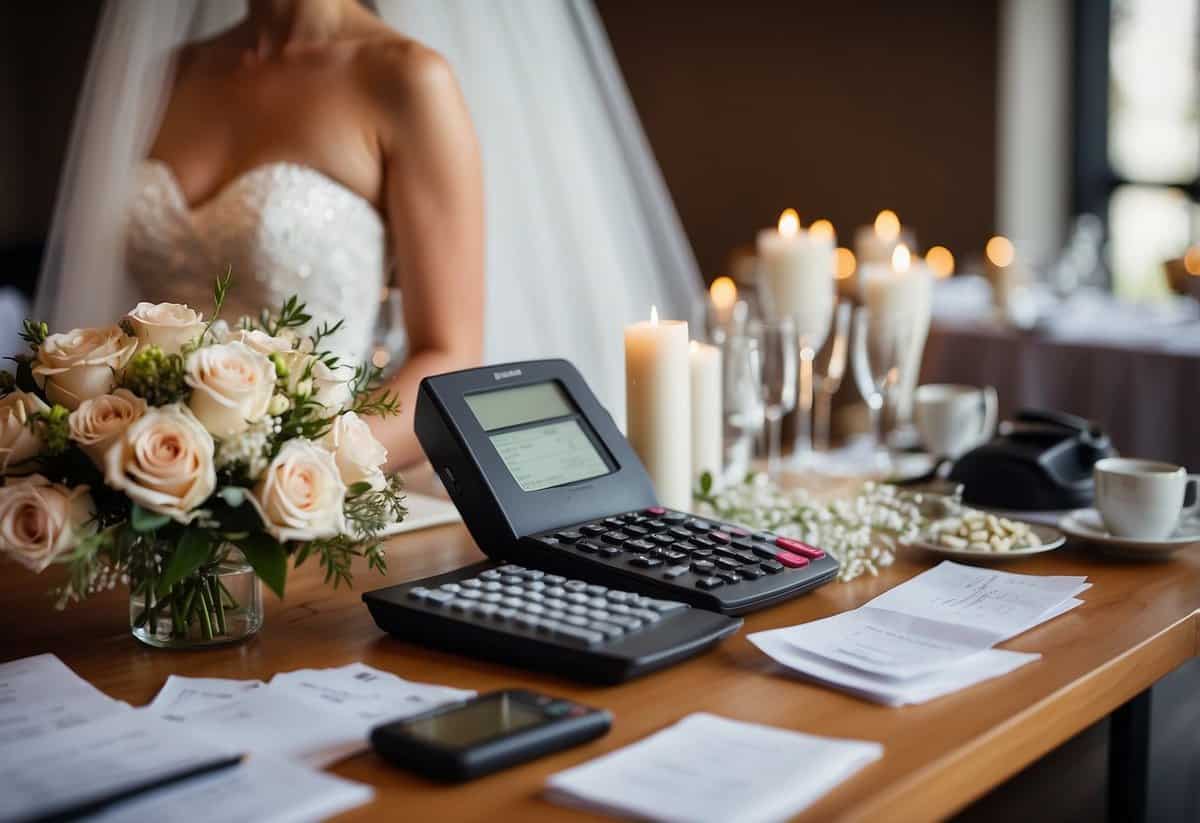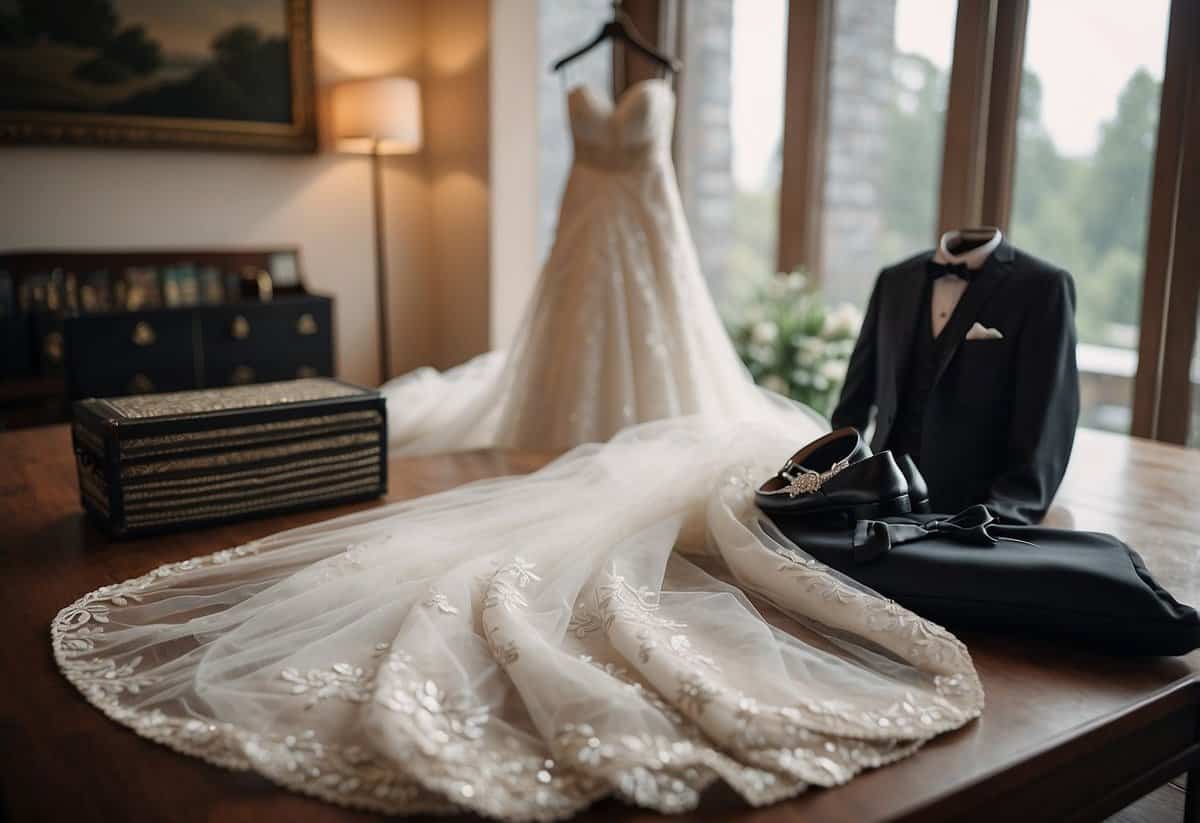Do Brides Have to Pay for Wedding? Costs Explained
Planning a wedding can be overwhelming, and figuring out who pays for what is one of the biggest challenges. Traditionally, the bride’s family covers a large portion of the wedding expenses, including the ceremony, reception, and various pre-wedding events. Over time, though, many couples now share costs more evenly or tailor payments based on their specific financial situations.

You might be surprised to learn that the groom’s family has traditional roles, too. For example, they usually handle the rehearsal dinner, honeymoon, and officiant fees. These traditions can provide a helpful starting point, but modern couples often choose the setup that works best for them.
Wedding expenses can be shared among the couple, both families, and even friends. This flexible approach can relieve pressure and make wedding planning more enjoyable for everyone involved. Whether you stick to tradition or create your own path, the most important thing is finding a balance that brings everyone joy on your special day.
Understanding Wedding Costs

Planning a wedding involves knowing where the money goes and who typically pays for what. By understanding the financial aspects, you can better manage your wedding budget and reduce stress.
The Basics of Wedding Budgeting
Creating a wedding budget is the first step in planning. List all expected expenses, no matter how small. This helps you get a full picture and avoid surprises. You should prioritize items that are most important to you and your partner.
Typical Budget Items:
- Venue
- Catering
- Photographer
- Flowers
Discuss with your families about financial contributions. Sometimes, parents help with major expenses like the venue or catering. Knowing who pays for what can simplify budgeting. Open communication with everyone involved is key.
Typical Wedding Expenses
Weddings have many costs associated with them. The venue and catering are often the biggest expenses. According to market research, the average cost of a wedding in the United States is around $27,000.
Common Expenses:
- Venue rental
- Food and drinks
- Photographer and videographer
- Flowers and decorations
It’s also important to budget for smaller items like invitations. The bride’s family is usually responsible for these. They cover costs like saving-the-dates, wedding invitations, and RSVP cards, which can add up to an average of $530 according to The Knot.
Who Pays for What

Traditionally, specific family members have certain financial responsibilities for wedding expenses. In modern times, these roles may change based on the couple’s preferences and circumstances.
Traditional Roles and Responsibilities
Traditionally, the bride’s family pays for the majority of the wedding expenses. This includes the engagement party, wedding planner, invitations, and the reception. They also cover decorations, flowers, and professional services. The bride or her family typically pays for the groom’s wedding ring.
The groom’s family has their own responsibilities. They often handle the rehearsal dinner and honeymoon costs. They also pay for the officiant’s fee, the marriage license, and wedding day transportation. Additionally, the groom’s family may cover the cost of the DJ or band and liquor.
Grooms generally pay for the engagement ring and sometimes the bride’s wedding ring. These traditions help distribute the financial burden.
Modern Approaches to Wedding Finances
In modern weddings, financial roles are more flexible. Many couples now share costs or pay for their own wedding. This can depend on their financial situation and preferences.
Younger couples, especially Millennials, and Gen Z, might rely more on their parents for financial support. According to recent trends, Millennial couples pay for about 42% of wedding expenses, while their parents cover around 56%.
On the other hand, Gen X couples often pay most of the wedding costs themselves, with their parents contributing less. This shift represents a move towards more shared responsibility and flexibility, allowing couples to plan their weddings according to their own needs and desires.
The Bride’s Expenses

When planning a wedding, the bride often has specific costs to cover. These usually include her attire, accessories, and certain pre-wedding events.
Attire and Accessories
Your wedding dress is one of the most important items you’ll purchase. The cost can vary greatly depending on the designer, fabric, and embellishments. Brides typically also budget for shoes, a veil, and jewelry.
It’s essential to set aside a portion of your budget for alterations to ensure your dress fits perfectly. Many brides also invest in attire for pre-wedding events like rehearsal dinners.
Common attire expenses:
- Wedding dress: $1,500-$4,000
- Shoes: $50-$200
- Veil: $100-$300
- Jewelry: Varies
Pre-Wedding Events
Pre-wedding events, such as engagement parties and bridal showers, often come with their own expenses. The bride’s family traditionally covers the cost of these events.
You might need to pay for venue rentals, catering, and decorations. Engagement announcement cards and save-the-dates are also typically covered by the bride or her family.
Typical pre-wedding event costs:
- Engagement party: $500-$1,500
- Bridal shower: $200-$1,000
- Invitations: $100-$300
By understanding these common expenses, you can better plan your wedding budget and ensure everything is covered.
Breakdown of Shared Expenses

Sharing wedding expenses can ease the financial burden. Knowing who typically pays for what can help you plan better and avoid misunderstandings.
Ceremony and Reception Costs
The bride’s family usually covers the reception venue, catering, and decor. This includes items like the wedding cake, food, and alcohol. Floral arrangements and other decorations are also typically their responsibility.
The groom’s family often pays for the officiant fee, the marriage license, and transportation for the groom’s family and groomsmen. They may also contribute to costs associated with the wedding rings. Sharing these expenses allows both families to partake in creating a beautiful wedding ceremony and reception.
Services and Vendor Fees
Professional services such as photography and videography are usually paid for by the bride’s family. They ensure the special moments are captured for a lifetime. Catering, dj, and band fees often fall under the bride’s family’s responsibilities too.
Groom’s family might handle costs for the transportation to and from the wedding and rehearsal dinners. Both families may share expenses for the reception band or DJ, videographer, and other entertainment. Clear communication helps balance these costs efficiently.
How to Manage and Divide Wedding Contributions

Managing and dividing wedding contributions requires clear communication and gratitude towards those helping to make your big day special. Proper planning can make the financial aspect smoother and less stressful.
Communication and Planning
Start by having open conversations with your partner and families about the budget. Identify who can realistically contribute. This will set clear expectations and avoid misunderstandings.
Consider using a wedding planner to help manage costs and coordinate the details. They can provide advice on balancing expenses between families and the couple.
Create a budget breakdown and share it with everyone involved. This helps clarify which party is responsible for what. Use lists or tables to keep track of payments, vendors, and deadlines.
Discuss any specific contributions, such as the bride’s family traditionally paying for the reception, while the groom’s may handle the rehearsal dinner. Adapt these based on each family’s ability to contribute.
Showing Appreciation
Expressing gratitude to those who contribute is crucial. Whether it’s gifts, kind words, or a thank-you card, show your appreciation.
Including loved ones in meaningful ways, such as mentioning them in a toast or offering meaningful wedding gifts, can also make them feel valued.
If you have a wedding registry, you can suggest that contributors choose items from there instead of providing direct financial support. This can be a less awkward way of asking for help.
Efforts like these not only show appreciation but also strengthen your relationships with your loved ones. Gratitude fosters positive feelings and helps maintain harmony throughout the wedding planning process.


